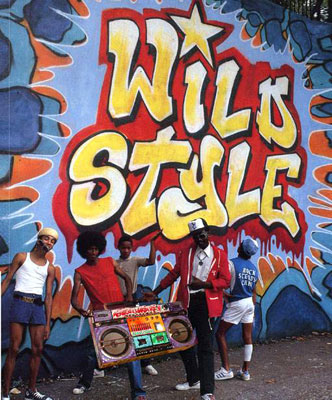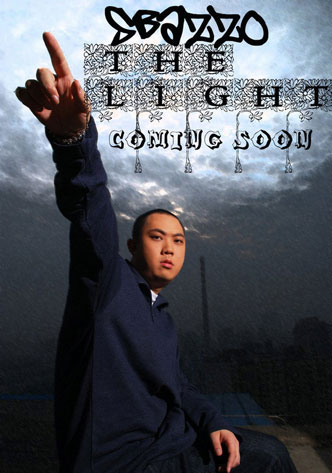Musical China Part 1: Ancient Melodies to Mandopop
Musical China Part 2: The Rocky Politics Show
When I first arrived in Shanghai nearly a year ago, I witnessed something that I’ve never forgotten. It impressed me so much that I often think back on it, almost eleven months later. It was late one night in a downtown club. The music was that typical R&B with dashes of hip hop and reggae, but what made it special was the surprise appearance of an MC. He sprang onto the stage and began to freestyle. His appearance was ghetto through and through – baggy jeans, white vest, gold chains – but with a streak that was quintessentially Chinese youth: an oversized trucker cap and hi-top sneakers. And, most importantly, he was rapping in Mandarin. He was a complete natural on the stage, and I was keen to know more. Through talking to various friends on the club scene, and researching further, I discovered that Chinese rap and hip hop is a relative latecomer to the music industry out here, and its trail is still being blazed in clubs and underground venues across the country. So how did it all begin? And what does the future hold for China’s fledgling rappers?

Chinese hip hop is widely known as xi ha (嘻哈), and rap is called shuo chang (说唱) literally meaning ‘narrative’, or the somewhat unfortunate C-Rap. The style of music really started to make its mark in the year 2000 in Beijing, traditional home of new musical trends in China, but it had its origins almost twenty years earlier. The films ‘Wild Style’ (1982) and ‘Breakin’’ (1984) were late arriving on mainland China, but when they were eventually imported from Japan and Hong Kong, they had a big influence on young music makers who were impressed by their soundtracks. In a country where only light rock and Mandopop were given radio airplay, hip hop seemed radical and interesting, and the epitome of rebellion.
The first official rap song was actually released in the early 80’s by famous Taiwanese musician Harlem Yu, also known as Yu Cheng Qing (庾澄庆) but his experimentations with rap went mostly unheeded. It wasn’t until the 1990s that L.A. Boyz hit the scene and brought hip hop to a wider audience. Taiwanese brothers Jeff and Stanley Huang and their cousin Steven Lin made up the group, and brought Californian hip hop to Asia thanks to their upbringing in Los Angeles. Also hailing from Taiwan were groups like The Party and T.T.M.
Hong Kong had a hip hop scene too, including Softhard and L.M.F., but since it was all in Cantonese, its appeal on the mainland was limited. Mandarin-speaking Taiwanese music was more popular in the clubs of Beijing and Shanghai. During the 90s, many freestylers rose to fame including MC Hotdog, and groups such as Daximen. The release of Eminem’s film biopic ‘8 Mile’ in 2002 made rap and hip hop even more popular in China, and encouraged MCs to take to the stage.
Since the events on Tian’anmen Square in 1989, radio airplay had been strictly controlled by the government. No airtime was given to rap or hip hop; little Western music was heard, and access was limited to smuggled CDs. However, creativity prevailed, and the genre began to take hold. Beijing-born Canadian rapper Sbazzo led a collective of MCs under the name Bad Blood. He joined forces with rap group Yin T’sang and released China’s first full-length hip hop album ‘For the People’ which led to them winning several awards including the 2003 Pepsi Music prize for Best New Rock/Rap group. A string of television and radio interviews followed for Sbazzo, and his music was featured in adverts for Adidas, Nike, and Reebok. These days, he devotes much of his time to supporting up and coming new rap and hip hop artists.

Another influential figure in the rise of Chinese hip hop was Dana Burton, an American who came to Shanghai in 1999. She got into the club scene as a DJ, and began to introduce more and more hip hop onto her playlists. She also set up Iron Mic in 2001, a competition for freestyle MCs. Another western DJ, Mel ‘Herbie’ Kent, lent his skills to rap collective Hidden, helping them produce their album ‘Serve the People’.
Despite lack of radio play, hip hop has carved out a niche in cyberspace. Websites hiphop2china.tv and hiphop.cn are places where fans can listen to and discuss music. And innovation prevails, too. While artists often used to rap in English, fearing that tonal Mandarin wouldn’t suit the style, modern rappers are now proud to use their native language. One hip hopper, Hu Xuan, even released an album sung completely in Kunming dialect. These days it’s common to see hip hop nights featured alongside rock and R&B events in cities around China, and the scene look set to grow and grow.
***
Related Links
Musical China Part 1: Ancient Melodies to Mandopop
Musical China Part 2: The Rocky Politics Show
May 4th Movement: Not Just a Rap Song
Warning:The use of any news and articles published on eChinacities.com without written permission from eChinacities.com constitutes copyright infringement, and legal action can be taken.
All comments are subject to moderation by eChinacities.com staff. Because we wish to encourage healthy and productive dialogue we ask that all comments remain polite, free of profanity or name calling, and relevant to the original post and subsequent discussion. Comments will not be deleted because of the viewpoints they express, only if the mode of expression itself is inappropriate.
Please login to add a comment. Click here to login immediately.